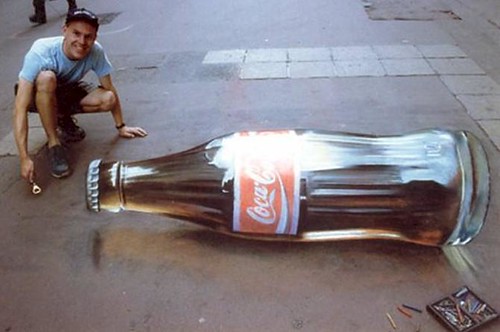 So, I saw The Sixth Sense for the first time this weekend. My mom really likes this movie, and now I see why. Until the end of the movie, you are wondering if Cole is really seeing dead people or if he is crazy and having hallucinations. The whole movie is about seeing what you want to see. This is what plagues the “ghosts” that Cole is seeing; they don’t
So, I saw The Sixth Sense for the first time this weekend. My mom really likes this movie, and now I see why. Until the end of the movie, you are wondering if Cole is really seeing dead people or if he is crazy and having hallucinations. The whole movie is about seeing what you want to see. This is what plagues the “ghosts” that Cole is seeing; they don’t  know that they are dead, so they don’t see anything as it would be with them dead. The ending really ties this together, but you’ll have to watch the movie if you haven’t already to know what I am talking about.
know that they are dead, so they don’t see anything as it would be with them dead. The ending really ties this together, but you’ll have to watch the movie if you haven’t already to know what I am talking about.The main character of Blow-Up also sees dead people, or a dead person to be exact. Thomas is a man living in London during the 60’s, a time in which London thrived. A happening and THE place to be of the time,
 what can London teach us about being cool?
what can London teach us about being cool?IS LIFE HOW WE MAKE IT? Knowing what is really there is portrayed as cool in this movie. Thomas wonders around London as a photographer capturing the “real London.” What is captured in a picture is really there; that is the truth, thus is Thomas’s philosophy. However, we learn that all that he sees may be questionable. The movie’s namesake, Thomas blowing up a picture to see what is really there. Was a guy murdered? The photo seems to show a body in it after many, many blow ups, and Thomas even sees the body that night. But he doesn’t get a credible shot of the body, which disappears the next day. We also start to question his sense of reality at the very end when he (and the audience) starts to hear the tennis game played by the mimes. Just as the ghosts in The Sixth Sense only see what they want to, does Thomas only see a murder in his picture because he wants one? He talks about leaving London because “it is doing nothing for [him],” but does he really want to leave? He could be fabricating the excitement of finding a murder to show that London still has potential. This movie is calling into question the validity of what we see. I think this movie finds it cool to call into question what you see.
SPONTANIOUS and EXTREME. There doesn’t seem to be an ounce of planning involved in the storyline of Blow-Up. There is no self control; everyone is free to do what they want. Thomas is never still; he is either driving around, taking pictures, having his way with models, going to concerts and taking a guitar handle just because someone else wants it, developing pictures, buying random objects that he suddenly has to have, looking for dead bodies. The mimes at the beginning and end of the film are always rushing around and having a good time. All of this action is like Dirk from the movie Sahara. Dirk is always on the move. Given that it is an action movie, but his character will be eating lunch with you one minute and then running off to a Mosque the next, just as Thomas does with his photo book publisher. There is also the other extreme side of no movement at all, like at the concert. People are just dead there, maybe trying to see the “deeper, true meaning behind the music”? In his studio, Thomas tells the lady who wants his picture to sit still and listen to the song he is playing on his record player, not dance allowed. It would see that there are two conflicting types of cool; either you always move and flow with life, or sit back, be still, and observe what is really going on.

You hit on something really interesting here. This idea of watching life or being part of it. Doing both is hard. This is why, love them or hate them, we have had a surge in 1st person steady cam movies like Blair Witch and Cloverfield. Watch either of these now with this in mind and you will be blown away.
ReplyDelete